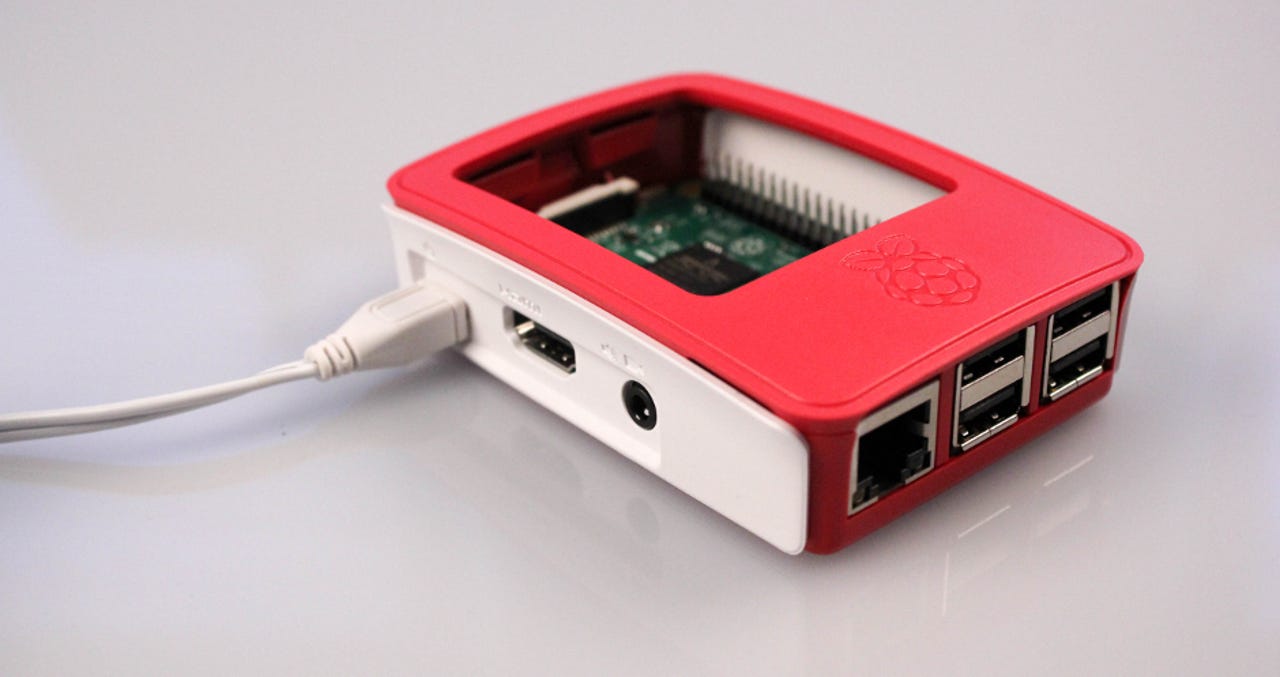Why Android and even Windows might make it onto the Raspberry Pi 3


The Raspberry Pi 3 in its new official case.
The Raspberry Pi 3 is out today - but just what changes will it make to the systems the Pi can run?
The Pi's co-creator Eben Upton spoke about the new operating systems the community is working to bring to the Pi 3 and the chances of seeing Android, Chromium OS and maybe even a full version of Windows on the board.
While Windows 10 was released for the Raspberry Pi 2 last year it isn't the full desktop version of the Microsoft OS, but a cut-down version called Windows IoT Core designed to support Internet of Things appliances.
However, Upton says the Pi 3 is technically capable of running a full version of Windows - pointing to the similarities of the board's underlying hardware architecture to that of the original Surface RT tablets, which ran a version of Windows 8.
See also
"There's no fundamental difference between this device and a Windows Surface device," he said.
"The operating system underpinnings are the same. We'd dearly love to have the [Windows] shell and applications on there but that isn't something that is in scope for the relationship we have [with Microsoft] at the moment."
The Pi 3 is based around a more powerful CPU core than the original Surface tablets but its memory is half that of the original Surface and clocked at a lower speed.
Also, Upton highlights that the Windows software that most people want to run are the apps they use on their desktops and laptops at home, not the far smaller number of titles that ran on Surface RT. The Surface RT OS has since been superseded by Windows 10 Mobile, which can be used on tablets and smartphones that, like the Pi, use ARM-based hardware.
The boost to the Pi's performance may help those who want to run desktop Windows software on the board. Running this software on one of the Pi's Linux-based operating systems currently requires using the tools ExaGear and Wine together. While this approach has been taken with limited success, it does add significant overhead - which the Pi 3's additional processing power could at least begin to address.
"We're chipping away at it, as we are putting more and more power into the system there is that range of stuff that becomes possible," said Upton.
A version of Windows 10 IoT Core will be released for the Pi 3 at a later date and is in a complete enough state that it is expected to be demoed at the Pi 3's launch on Monday.
The community of Pi users have had a bit more success in getting popular operating systems Android and Chromium OS - the open-source equivalent of Chrome OS - to run on the Pi.
Photos of the Raspberry Pi through the ages: From the prototype to Pi 3 B+
Work to port these systems to the board should be aided by the release of the Pi 3, which is based on the same ARM Cortex A53 chipset already used in many Android smartphones. Even more importantly its release coincides with the development of an open-source 3D graphics driver for the Pi that is making it easier to implement these systems.
"Our technical choices were blocking the community from getting this stuff done and we're backing away from those now," said Upton of the Mesa and DRM driver developed by Eric Anholt.
"There's a quite impressive looking Chromium OS port for the Pi. As we get more processing power and as Eric's stuff matures further, we hope that can become something we can endorse and have as an option on the Pi."
Late last year a YouTube user named Geek Till It Hertz showed the progress they had made bringing Android 6.0 Marshmallow to the Pi 2.
Read the full interview with the Pi's co-creator about what the new board makes possible on TechRepublic.
- The Raspberry Pi 3 Model B is available now for $35 via Premier Farnell and RS Components.